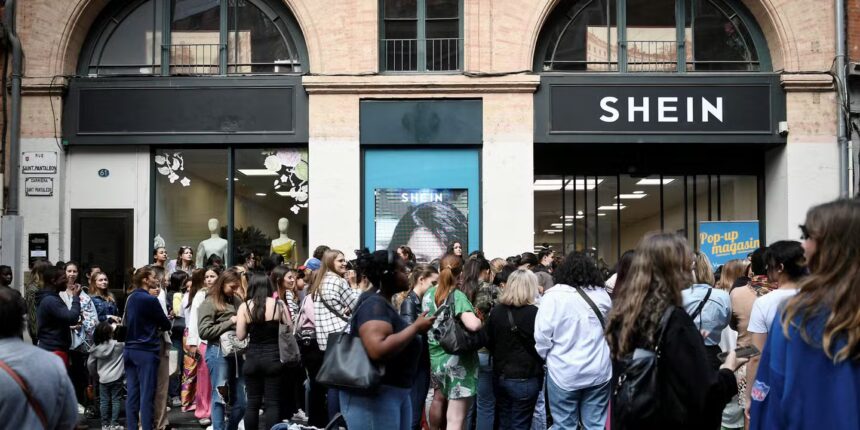When Shein announced it would open its first permanent stores in France, we at FinancialMediaGuide saw this as a clear signal: the company is ready to experiment even in markets where its practices face sharp criticism. Starting in November, the brand will enter BHV in Paris and several Galeries Lafayette locations through partner SGM. This marks a sharp departure from its online-only model – and the reaction from French markets and industry players has been tense and hostile.
The challenges of moving offline for Shein are obvious. Until now, the company thrived on minimal stock levels, warehouse-free logistics, and the advantage of customs exemptions for low-value parcels. Transitioning into brick-and-mortar retail means building replacement supply chains, maintaining inventory in stores, and shouldering new costs – all of which undermine its previous competitive edge. At FinancialMediaGuide we believe Shein views this as a way to strengthen its brand presence and reduce its vulnerability to online-only risks.
Another dimension is the shockwave through the French fashion industry. Galeries Lafayette publicly declared that Shein’s store openings violate franchise agreements and conflict with the group’s brand values. Trade associations accused Shein of “destroying French labels” and flooding the market with disposable products. These accusations cut deeper as several French fast-fashion retailers, including Jennyfer and NafNaf, went bankrupt earlier this year. In our analysis at FinancialMediaGuide, this is not just a cultural clash – it’s a battle for market share, with Shein positioning itself as the aggressor.
Regulatory pressure is also mounting. In July 2025, Shein was fined €40 million in France for misleading discounts and failing to substantiate its environmental claims – the largest fine ever imposed on a textile company in the country for commercial misconduct. This development reinforces critics’ arguments: Shein is no longer a “new disruptor,” but a brand under intense scrutiny. At FinancialMediaGuide, we see this as a warning signal: moving into physical retail will amplify its public accountability and legal risks.
Adding to the challenge is the global tariff landscape. In the U.S., the “de minimis” duty exemption on low-value parcels is ending, and the EU plans similar reforms. Losing these tax advantages could significantly weaken Shein’s online operating model. Offline expansion in France, in this sense, may serve as a hedge – a way to diversify revenue channels and mitigate structural risks.
But the key question remains: will the French market accept Shein’s physical presence? According to industry reports, the first Shein space will open on the sixth floor of BHV Marais, followed by locations in Galeries Lafayette in Dijon, Reims, and Limoges. The company has promised “revitalization of city centers” and around 200 new jobs. While this sounds appealing, we at Financial Media Guide caution that such pledges often remain marketing narratives, especially if store profitability proves weak.
In conclusion, our assessment is that Shein’s French experiment is a high-risk, high-reward gamble. If the stores gain traction and build customer loyalty, Shein could strengthen its position as a hybrid retailer. But if rising operational costs, protests, and regulatory hurdles outweigh the gains, the project could severely damage both its reputation and financial performance.
At FinancialMediaGuide we recommend that investors and observers closely monitor the early performance of Shein’s stores in BHV and Galeries Lafayette, as well as the response from French regulators and media. This case could set a precedent: if successful, it may open the door for other fast-fashion brands backed by Chinese capital to enter physical retail. If it fails, however, it will stand as a stark reminder of the limits online giants face when stepping into the offline world.













